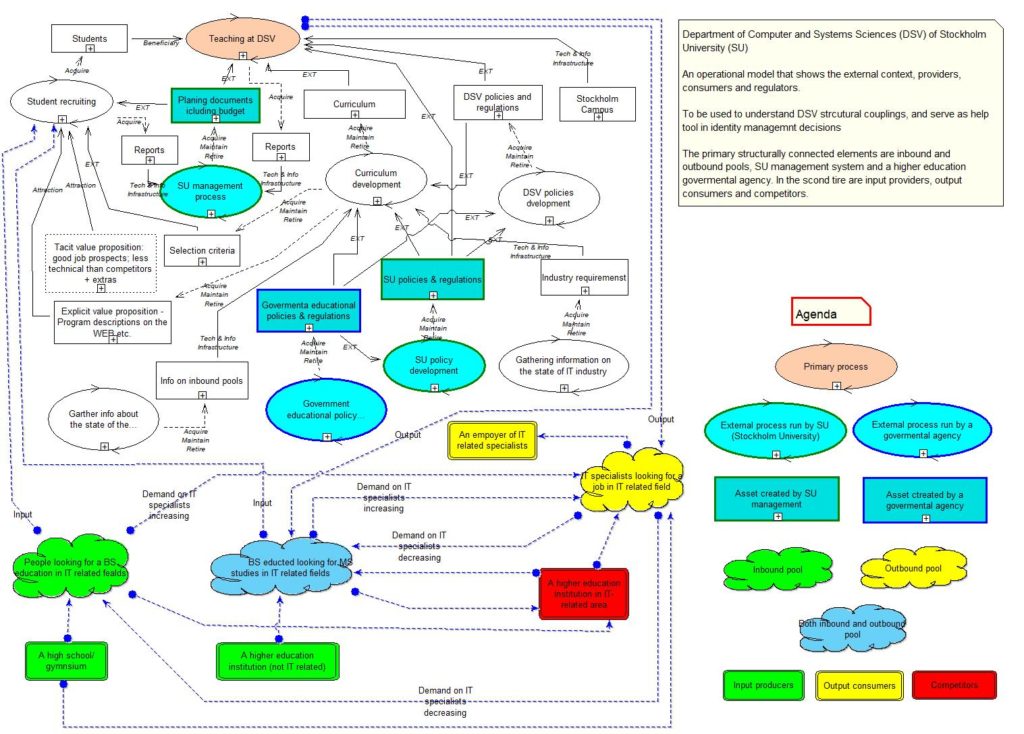The idea of structural coupling introduced by Maturana and Varela is relatively simple; it suggests that a complex system adjusts its structure to the structure of the environment in which it operates. The adjustment comes from the constant interaction between the system and its environment, see the picture below.

The idea was transferred from the field of biologic cybernetic to other fields. For example, Niklas Luhmann has transferred social science stating that a system deliberately chooses to structurally couple itself to a limited number of other systems, the latter functioning as information channels as other parts of the world. Patrick Hoverstadt has suggested to use this idea for strategy development, including identity management of an organizational system. To be able to use the concept in this way, we need to be able to find out all structural couplings as is or to be of a given entity. As was shown in our work using FEM to depict an enterprise can help with this problem. In the diagram below we present a FEM that can be used to identify structural couplings of a department of a higher education. Initially, this example, but without the usage of FEM, was introduced in a separate paper.
You can play with the diagram above in your FEM toolkit by importing the following library (unzip and use ADL import in Import/Export menu).

